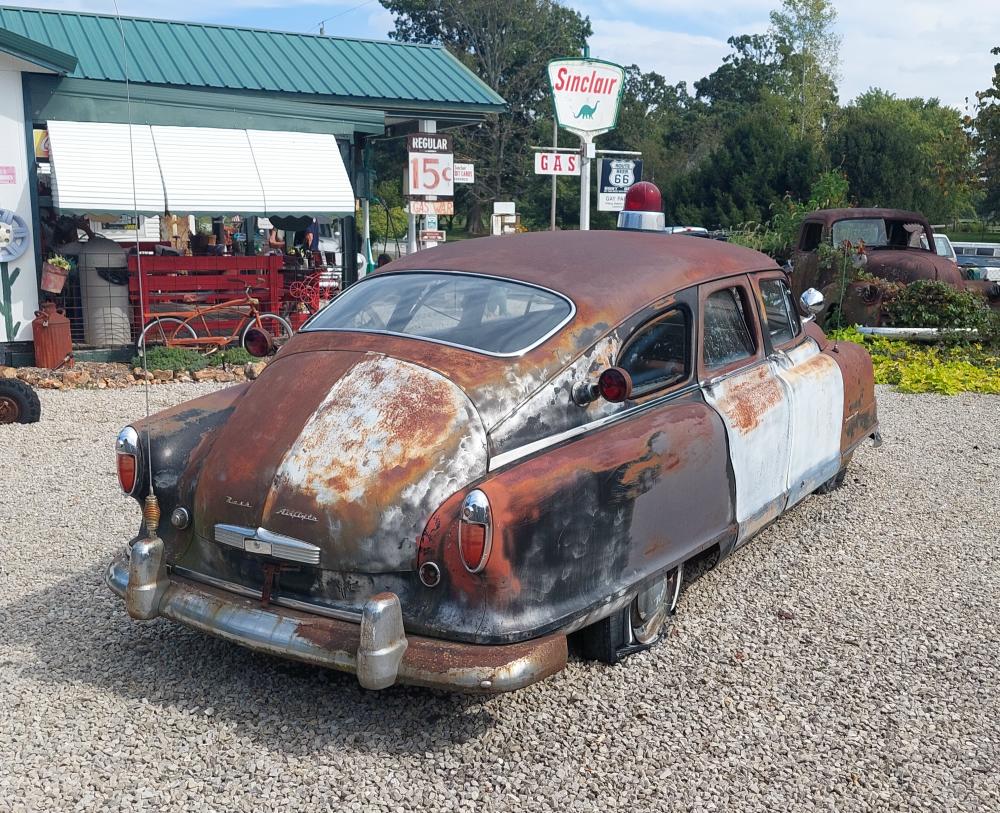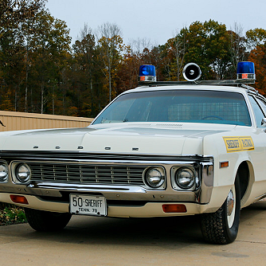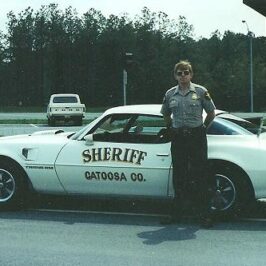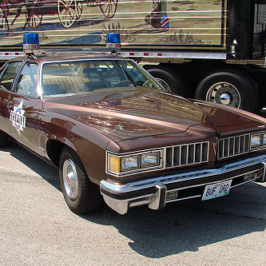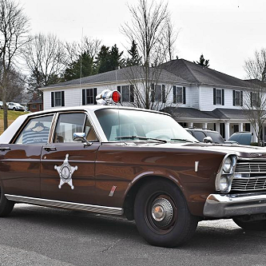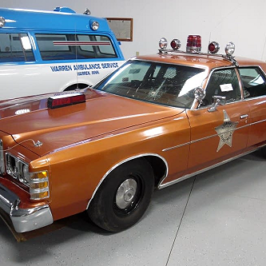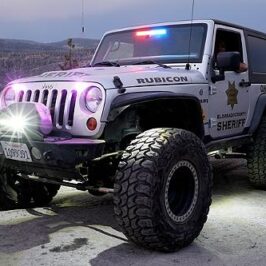While travelling across Old Route 66 in Missouri I came across Gary Gay Parita (21118 Old 66, Ash Grove, MO 65604), a vintage Sinclair gas station and roadside attraction. This place is a museum and worth stopping to check out.
Parked outside was this 1950 or 1951 Nash Statesman Super 4-door. Nash only made this body style of the Statesman in 1950 and 1951.
I was told by the guy running the place that this was an old Sheriff car out of Colorado. As I looked the car over, all of the emergency lighting and the siren seemed to be correct for that time period, and I do believe that this car served as some type of Sheriff or Police car.
The spotlight and blue light by the grill are Unity lights. Unity is known now mostly for spotlights, but they use to also sell fixed position lighting.
The red light on the roof is a Federal Signal Beacon Ray Model 17. This light was produced from 1948 to 1985.
I don’t know who manufactured the lights mounted on the sides behind the rear side windows, but they also look correct for the time period.
I’m not sure what make and model the mechanical siren on the fender is, but right now I’m thinking it might have been produced by Sireno.
This is definitely a pretty cool car. It would be great to see someone take this car and actually restore it and its equipment.
More About The Nash Statesman:
Nash developed its post–World War II automobiles using an advanced unit-body construction with fastback aerodynamic styling under the Airflyte name, reflecting a popular styling trend in the 1950s. The cars were available as a two- or four-door sedan. A distinguishing feature of all Nashes are the “skirted” fenders. Although the turning circle could be compromised, the front track is narrower by nearly three inches: the front is just under 55 inches while the rear track is 60.5 in. The base Nash 600 was renamed Nash Statesman for the 1950 model year.
The 112.0 in wheelbase of the Statesman was 9.0 in shorter than the companion Ambassador line. This was achieved by using a shorter front “clip” (the portion of a car from the cowl forward) than was installed on the Ambassador. Statesman and Ambassador hoods along with front fenders are not interchangeable. From the cowl rearward, the two series’ dimensions were identical. Two-door models included Nash’s exclusive “Airliner Reclining” front seat, which was optional on the four-door sedans. These seats could be converted to form a bed.
Statesman engine designs were based on the L-head Nash Light Six engine that was designed in the 1920s and continued into the 1940s in the Nash LaFayette and Nash 600. It is characterized by the lack of intake and exhaust manifolds. The Statesman models were comparatively lighter resulting in fuel efficiency as reported by owners and testers.
Nash Statesman models were offered in three trims, the top-line Statesman Custom and the entry-level Statesman Super as well as a base fleet-only model for commercial and institutional use.
The Statesman models, along with the Ambassador line, were the volume and profit leaders for Nash.
More Photos:
Click to enlarge.
About The Author
Code 3 Garage
I started my career as a police officer in 1989 with the Geneva on The Lake Police Department. I worked part time as a police officer and full time as a Security Sergeant doing armed mobile security patrols for a local security company. In 1990 I became a State Trooper with the Ohio State Highway Patrol. During my career as a State Trooper I was certified as a Technical Crash Investigator, OPOTA Police Instructor, OPOTA Police Driving Instructor, LASER Instructor, and received awards for ACE (Auto Larceny) and Post Trooper of The Year. Code 3 Garage is a mix of my inner automotive gearhead, and public safety background. I hope you enjoy it!


